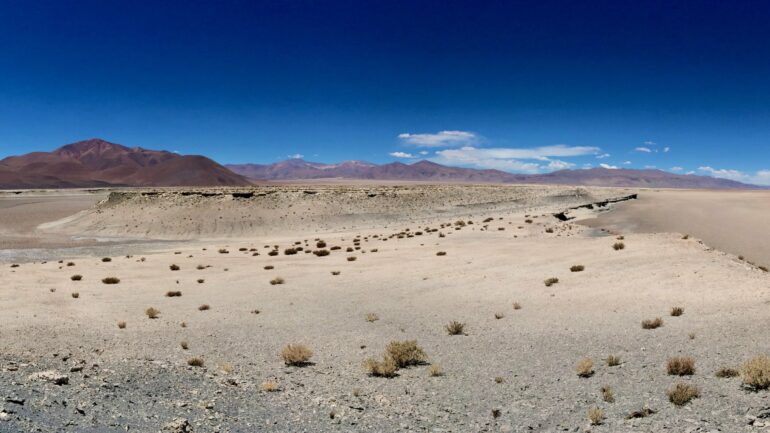With the aid of stable hydrogen isotopes in volcanic glass, an international research team, including Senckenberg geoscientist Prof. Dr. Andreas Mulch, has studied the uplift history of the Andes Plateau. In their study, published in the journal Proceedings of the National Academy of Sciences (PNAS), they show that individual sections of today’s biodiversity hotspot rose to their current elevation only 13 to 9 million years ago. The formation of the Andes is considered decisive for the development of biodiversity in South America.
The slopes of the Andes are home to the world’s largest centers of biodiversity: vicuñas, llamas, spectacled bears, and Andean foxes can be found in the longest mountain range on earth—spanning approximately 9,000 kilometers—along with the rabbit-sized pudu deer and the Andean condor, which boasts a wingspan of three meters or more.
“The Amazon rainforest alone hosts an estimated 40,000 plant species. Several studies have shown that the formation and changes of the Andes plays a key role in the evolutionary history of the region’s flora and fauna,” explains Prof. Dr. Andreas Mulch of the Senckenberg Biodiversity and Climate Research Center and Goethe University Frankfurt. “We have been asking ourselves since when this has actually been the case.”
Led by first author Dr. Heiko Pingel, a geoscientist at the University of Potsdam, Mulch and an international research team studied the uplift of the Puna Plateau in the south-central Andes in northwestern Argentina. The Andean plateau, with an average elevation of four kilometers, is the second-largest mountain plateau in the world.
“There are disputed hypotheses and controversial debates about the timing and nature of the plateau’s uplift and its impact on the environmental conditions of South America, where you can travel from subtropical, species-rich forests on the eastern slope of the mountain range to one of the world’s most arid deserts on South America’s Pacific rim in just a few hours,” explains Pingel.
“Previous estimates of exactly when the plateau reached its current elevation vary widely—from 40 to 10 million years ago. That makes it difficult to understand the forces that shaped the plateau’s unique features and, by extension, the current environment as well.”
In their new paper, the team compared hydrogen isotope ratios from million-year-old volcanic glass collected during various field studies with data from the much lower-lying foothills. “The volcanic glass reveals the altitude of our study area at different times by storing the elevation-dependent precipitation at that time,” explains Mulch. “While the elevation of the foothills barely changed over the last 20 million years, our data show that the Puna Plateau has risen about two kilometers since the middle to late Miocene—13 to 9 million years before present.”
Mountains influence wind and precipitation systems and act as both efficient corridors for as well as barriers to species dispersal.
“Our results shed new light not only on geological processes in the central Andes but also on the evolution of biodiversity in South America. This shows once again how everything is interconnected in the ‘Earth System,’ and that geobiodiversity research is the correct approach to understanding the complex processes of the past, while at the same time finding solutions for the future,” adds Mulch in conclusion.
More information:
Heiko Pingel et al, Miocene surface uplift and orogenic evolution of the southern Andean Plateau (central Puna), northwestern Argentina, Proceedings of the National Academy of Sciences (2023). DOI: 10.1073/pnas.2303964120
Provided by
Senckenberg Research Institute and Natural History Museum
Citation:
High mountains, high diversity: For how long have the Andes controlled South America’s biodiversity? (2023, October 10)



